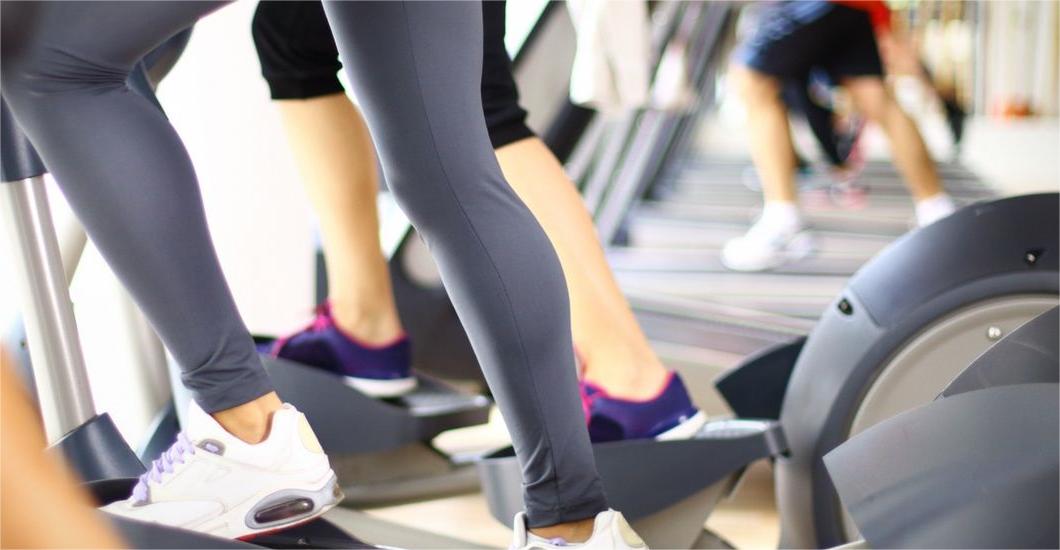When it comes to cardiovascular exercise or aerobic exercise, the age-old debate of whether it's better to run on a smart treadmill or outside has sparked discussions among fitness enthusiasts. Each option presents distinct advantages and considerations that cater to different preferences and goals.
The decision ultimately hinges on individual needs, environmental factors, and personal preferences, as both treadmill running and outdoor running offer their unique set of benefits and drawbacks.
Running Outside
Running outside, with the wind in your hair and the pavement beneath your feet, is a timeless activity that connects us with nature and the world around us. It allows us to escape the confines of a gym and experience the changing scenery, fresh air, and exhilarating sense of freedom. Whether you're pounding the pavement through a bustling city or exploring scenic trails in the great outdoors, running outside offers a dynamic and invigorating experience that can greatly enhance your physical fitness and mental well-being.

It has its own pros and cons. Let’s check the details below:
Pros
Varied Terrain:
Running outdoors provides access to diverse terrains such as hills, trails, and uneven surfaces, which engage different muscle groups and challenge your body in unique ways. This can lead to improved strength, stability, and overall fitness.
Fresh Air and Scenery:
Breathing in fresh air and immersing yourself in nature can invigorate your senses, boost your mood, and provide a welcome change of scenery. Running outside allows you to enjoy parks and trails, or explore new neighborhoods, making your workouts more enjoyable and stimulating.
Vitamin D Absorption:
Exercising outdoors exposes you to natural sunlight, leading to the production of vitamin D in your body. Vitamin D is essential for bone health, immune function, and overall well-being.
Psychological Benefits:
Running outside can have a positive impact on mental health by reducing stress, improving mood, and promoting a sense of freedom and connectedness with nature. The ever-changing outdoor environment can also provide a distraction from monotony and enhance mindfulness during your runs.
Cons
Weather Limitations:
Running outside exposes you to the elements, which means you'll have to contend with hot, cold, windy, or rainy conditions. Extreme weather can be uncomfortable or even dangerous, requiring you to adjust your plans or take extra precautions.
Surface Impact:
Outdoor running puts more strain on your joints and muscles due to the harder impact on concrete or asphalt surfaces. This can increase the risk of injuries, particularly if you have underlying joint issues or run on uneven terrain without proper footwear.
Safety Concerns:
While running outdoors can be an enjoyable experience, it also poses potential safety risks, such as uneven surfaces, traffic, or encounters with unfamiliar animals or people. It's important to prioritize personal safety and take precautions such as choosing well-lit routes, running with a buddy, or wearing reflective clothing.
Running On a Treadmill
Is running on a treadmill easier?
Running on a treadmill can be perceived as easier or more convenient by some individuals due to certain factors. Here are some reasons why running on a treadmill might be considered easier:
Controlled Environment:
Treadmills provide a controlled and consistent surface to run on, which can be advantageous for those who prefer a predictable and stable footing. The surface is usually cushioned, which reduces impact and may be gentler on the joints compared to running on hard outdoor surfaces.
Customizable Settings:
Treadmills allow you to adjust the speed, incline, and other settings according to your preferences and fitness level. This control over variables like pace and elevation can make it easier to tailor your workout to specific goals or gradually increase the intensity over time.
Climate Control:
When running on a treadmill, you can exercise in a climate-controlled environment unaffected by external weather conditions. This eliminates the challenges of extreme temperatures, wind, rain, or humidity, making it more comfortable and potentially easier to sustain your desired pace and effort.
Access to Metrics and Entertainment:
SupeRun smart treadmill can link to a fitness app - PitPat. This app can provide free and valuable training lessons and online competitions. It creates a platform for people to complete the race and be app runners online at home to get rewards. Having access to these interesting things can make the running experience more enjoyable and help pass the time more easily.
Pros
Controlled Environment:
Treadmills offer a controlled and predictable surface to run on, which can be beneficial for individuals who prefer a consistent footing and want to avoid the uncertainties of outdoor terrain.
Cushioned Surface:
Treadmills typically have a cushioned surface that provides impact absorption, potentially reducing stress on the joints and lowering the risk of injuries associated with running on hard outdoor surfaces.
Weather Independence:
Running on a treadmill allows you to exercise regardless of weather conditions, making it a convenient option for those who want to maintain their training routine regardless of rain, extreme heat, or cold temperatures.
Performance Tracking:
Many treadmills come with built-in features like heart rate monitors, speed and distance tracking, and pre-programmed workouts. These tools can help you monitor your progress, set specific training goals, and track your performance over time.
Cons
Monotony:
Running on a treadmill can be repetitive and monotonous, as you are essentially running in one place. The lack of changing scenery and external stimuli can make the experience less engaging and potentially lead to boredom.
Limited Variability:
Treadmills offer adjustable incline settings, but they still lack the natural variations in terrain that you would encounter outdoors. This can result in less engagement of certain muscle groups and potentially limit the overall challenge and effectiveness of your workout.
Lack of Fresh Air and Nature:
Running on a treadmill restricts your exposure to fresh air, natural sunlight, and the benefits of being immersed in nature. The absence of these elements can diminish the overall sensory experience and the potential mood-boosting effects of outdoor running.
Space and Cost Constraints:
Treadmills require dedicated space in your home or gym, and they can be expensive to purchase and maintain. If you have limited space or budget constraints, owning or accessing a treadmill may not be feasible.
Is running on a treadmill bad for you?
Impact and Joint Stress:
While treadmills often have cushioned surfaces that absorb some impact, running on any surface can still put stress on your joints, especially if you have pre-existing joint issues or poor running mechanics. It's important to listen to your body, gradually increase intensity, and ensure you have proper running shoes that provide adequate support and cushioning.
Overuse Injuries:
Running on a treadmill, just like any form of repetitive exercise, can lead to overuse injuries if you don't allow for proper rest and recovery. It's important to incorporate rest days, cross-training, and strength training exercises to build overall body strength and reduce the risk of injuries.
Lack of Variety:
Treadmill running lacks the natural variations in terrain and can lead to repetitive stress on specific muscle groups. To mitigate this, you can adjust the incline settings or incorporate other cross-training activities to engage different muscles and prevent overuse injuries.
Posture and Biomechanics:
Maintaining proper posture and running mechanics is crucial for injury prevention. When running on a treadmill, it's essential to focus on your posture, foot strike, and stride length to ensure efficient and safe running form.
Boredom and Motivation:
Treadmill running can be monotonous for some people, which may lead to a lack of motivation or enjoyment. It's important to find ways to stay engaged, such as listening to music or podcasts, watching TV shows or movies, or varying your workout routine to prevent boredom.
How to start running on a SupeRun treadmill?
Starting to run on a treadmill is a great way to begin or enhance your running routine. Here are some steps to help you get started:
Get Proper Footwear:
Invest in a good pair of running shoes that provide adequate support, cushioning, and a proper fit. This will help prevent discomfort and reduce the risk of injuries.
Warm Up:
Before starting your treadmill run, warm up your body with dynamic stretches or light cardio exercises like brisk walking or jogging for 5-10 minutes. This prepares your muscles and joints for the upcoming activity.
Familiarize Yourself with the Treadmill:
Take a moment to understand the treadmill controls and settings. Learn how to adjust speed, incline, and emergency stop features. Familiarize yourself with the display and any additional features the SupeRun treadmill may have.
Start with a Comfortable Pace:
Begin with a pace that feels comfortable and manageable for your fitness level. It's okay to start with a walk or a slow jog and gradually increase the speed as you get more comfortable and confident.
Focus on Proper Running Form:
Pay attention to your running form. Keep your head up, shoulders relaxed, and arms swinging naturally. Land on your midfoot or forefoot, rather than your heels, to minimize impact. Maintain a steady and comfortable stride.
Set Realistic Goals:
Start with realistic and achievable goals. You can begin with shorter time durations or distances and gradually increase them as your fitness level improves. Remember, progress takes time, so be patient with yourself.
Use Incline Settings(if your treadmill has one):
Experiment with incline settings to simulate outdoor running conditions and engage different muscle groups. Start with a flat surface and gradually increase the incline as you progress.
Stay Hydrated:
prepare a water bottle for running on the treadmill to stay hydrated during your treadmill workout. It's important to maintain proper hydration, even indoors.
Cool Down and Stretch:
After completing your treadmill run, gradually decrease the speed and allow yourself a few minutes for a cool-down walk or gentle stretching. This helps your body transition to a resting state and aids in muscle recovery.
Gradually Increase Intensity:
As you gain more confidence and endurance, gradually increase the intensity of your treadmill runs. You also can incorporate intervals, speed work, or hill training to challenge yourself and improve your overall fitness.
Remember to listen to your body and give yourself enough rest and recovery time between treadmill sessions. If you have any concerns or pre-existing health conditions, it's advisable to consult with a healthcare professional or a qualified fitness trainer before starting a new exercise routine.
How long should you run on a treadmill?
The duration of your treadmill run can vary depending on your fitness level, goals, and personal preferences. Here are some general guidelines to consider:
Beginners: If you're new to running or have a low fitness level, start with shorter durations and gradually increase over time. Aim for around 20-30 minutes of running on the treadmill, including warm-up and cool-down periods. Focus on building endurance and improving your fitness gradually.
Intermediate Runners: If you have some running experience and a moderate fitness level, you can aim for 30-45 minutes of running on the treadmill. This duration allows for a more substantial workout and helps improve cardiovascular fitness and endurance.
Advanced Runners: Advanced runners can sustain longer durations on the treadmill, depending on their training goals and fitness level. Running for 45 minutes to an hour or more can provide a challenging workout and contribute to improved performance.
|
The Duration Of Treadmill Run |
|
|
Fitness Level |
Running Time(Minutes) |
|
Beginners |
20-30 |
|
Intermediate Runners |
30-45 |
|
Advanced Runners |
45-60 |
It's important to note that the duration of your treadmill run is just one aspect of your overall training program. It should be accompanied by appropriate warm-up and cool-down periods, as well as strength training, cross-training, and rest days for balanced fitness development and injury prevention.
Ultimately, it's crucial to listen to your body and progress at a pace that feels comfortable and sustainable for you. If you're unsure about the ideal duration for your specific needs, consult with a qualified fitness professional who can provide personalized guidance based on your goals and fitness level.
running on a treadmill vs. running outside
|
Running on a Treadmill |
Running Outside |
|
Controlled environment |
Varied terrain and outdoor experience |
|
Cushioned surface reduces the impact |
Harder impact on concrete or asphalt |
|
Weather-independent |
Exposed to weather conditions |
|
No concerns about traffic or safety |
Safety concerns (uneven surfaces, traffic) |
|
Customizable speed and incline |
Natural variations in terrain |
|
Built-in metrics and entertainment |
Fresh air and natural scenery |
|
Climate-controlled environment |
Exposure to natural elements |
|
Less impact on joints and muscles |
Greater joint stress, especially on hard surfaces |
|
Monotonous and lacks changing scenery |
Engaging and ever-changing surroundings |
|
Limited impact from weather |
Potential discomfort from extreme weather |
|
Ideal for controlled training |
Ideal for exploring and adventure |
|
Easier to track performance metrics |
No reliance on machines or technology |
|
Less risk of outdoor hazards |
Potential encounters with animals or people |
The preference for running on a treadmill or outside can vary depending on individual preferences, goals, and circumstances. It's important to choose the option that aligns with your needs and provides an enjoyable and safe running experience.
Conclusion
In conclusion, the question of whether it is better to run on a treadmill or outside does not have a definitive answer. Both options offer distinct advantages and considerations that cater to different preferences, goals, and circumstances.
Running on a treadmill provides a controlled environment, cushioned surface, and customizable settings, allowing for precise training and protection from weather conditions. It can be convenient for those seeking consistency and convenience in their workouts. Treadmills also offer performance-tracking features and entertainment options that can enhance the running experience.
On the other hand, running outside offers the benefits of varied terrain, fresh air, natural scenery, and the exhilaration of being immersed in nature. It engages different muscle groups, provides vitamin D from sunlight, and can have positive psychological effects, such as reducing stress and enhancing mood. However, outdoor running comes with weather limitations, potential safety concerns, and the need to adapt to varying terrain.
The choice between running on a treadmill or outside ultimately depends on individual preferences, goals, and circumstances. It may be beneficial to incorporate a combination of both into your running routine to enjoy the advantages of each option. Consider factors such as your fitness level, weather conditions, access to safe running routes, and personal preferences to make an informed decision.
Ultimately, the most important aspect is finding an enjoyable and sustainable exercise routine that aligns with your needs and promotes a healthy and active lifestyle.







Leave a comment
All comments are moderated before being published.
This site is protected by hCaptcha and the hCaptcha Privacy Policy and Terms of Service apply.